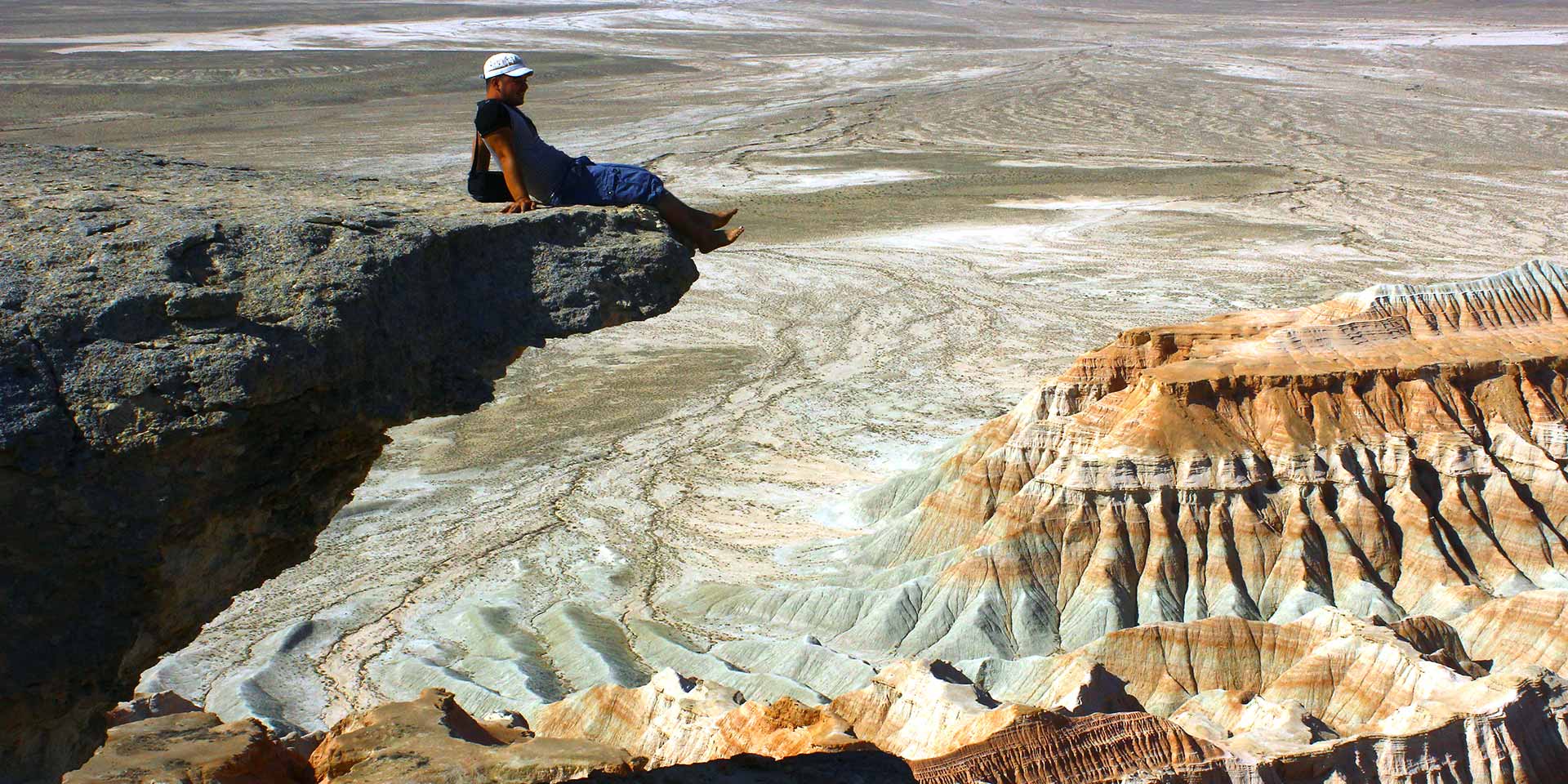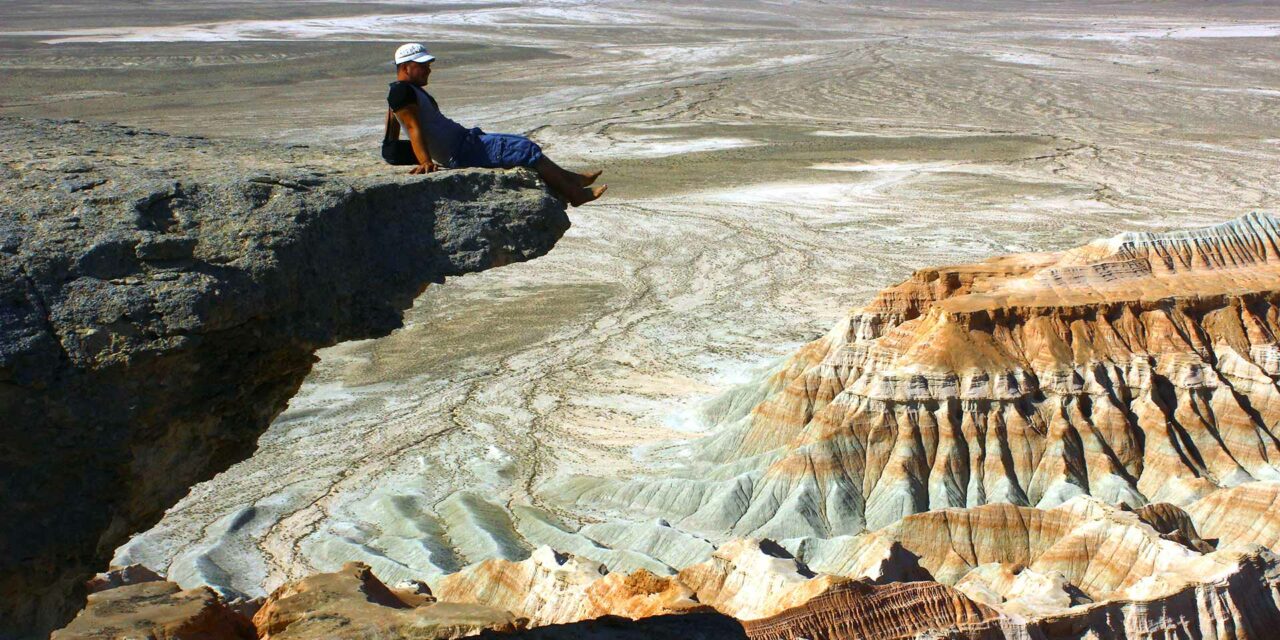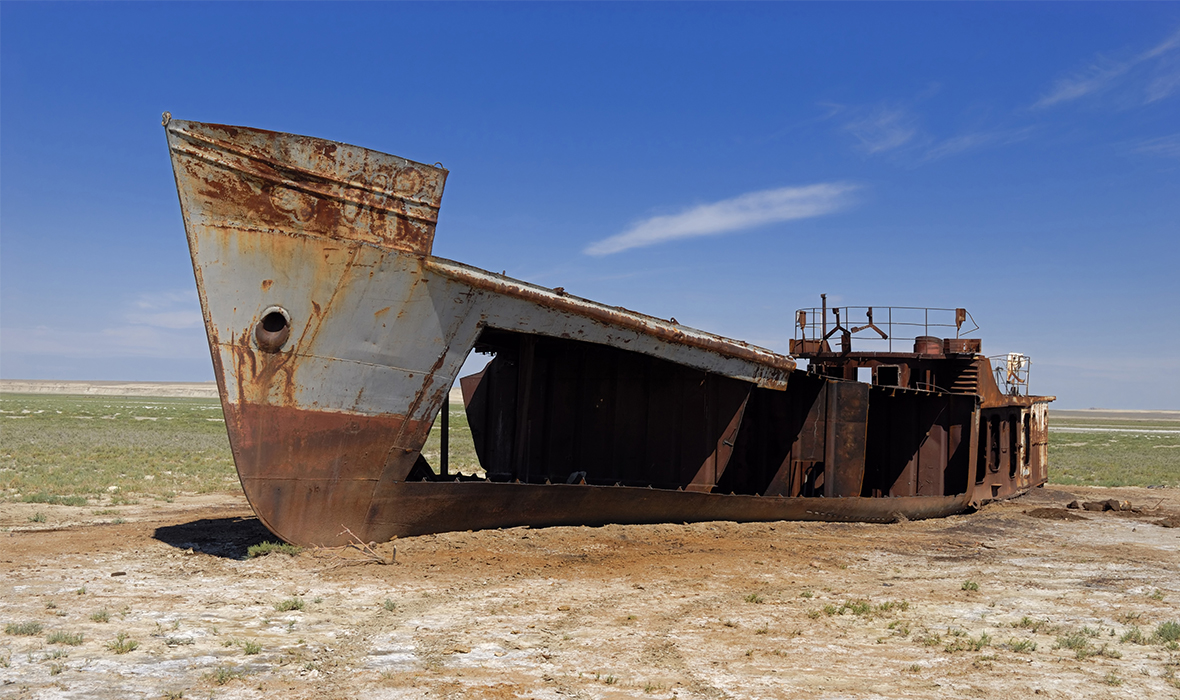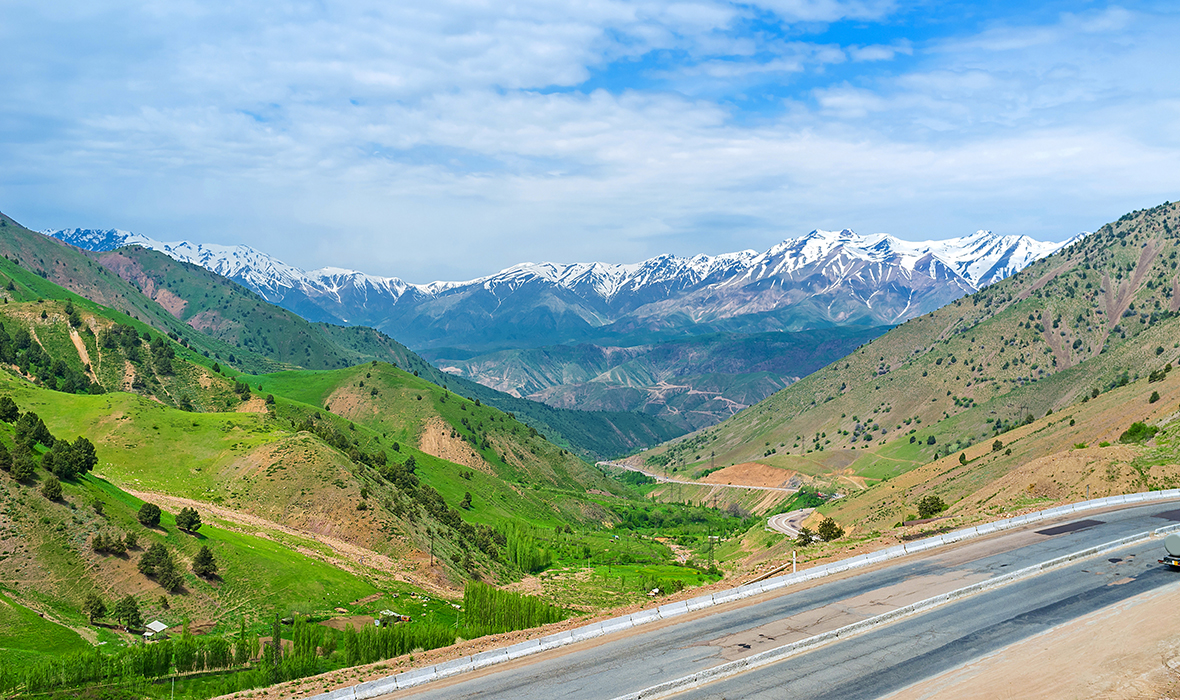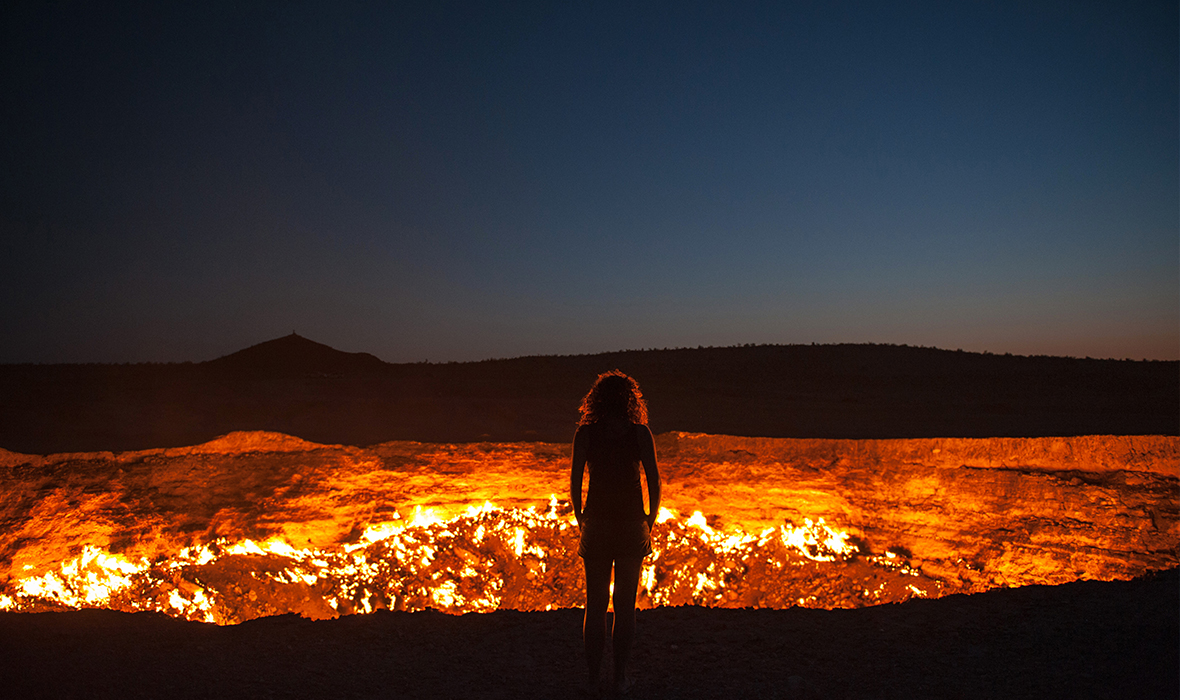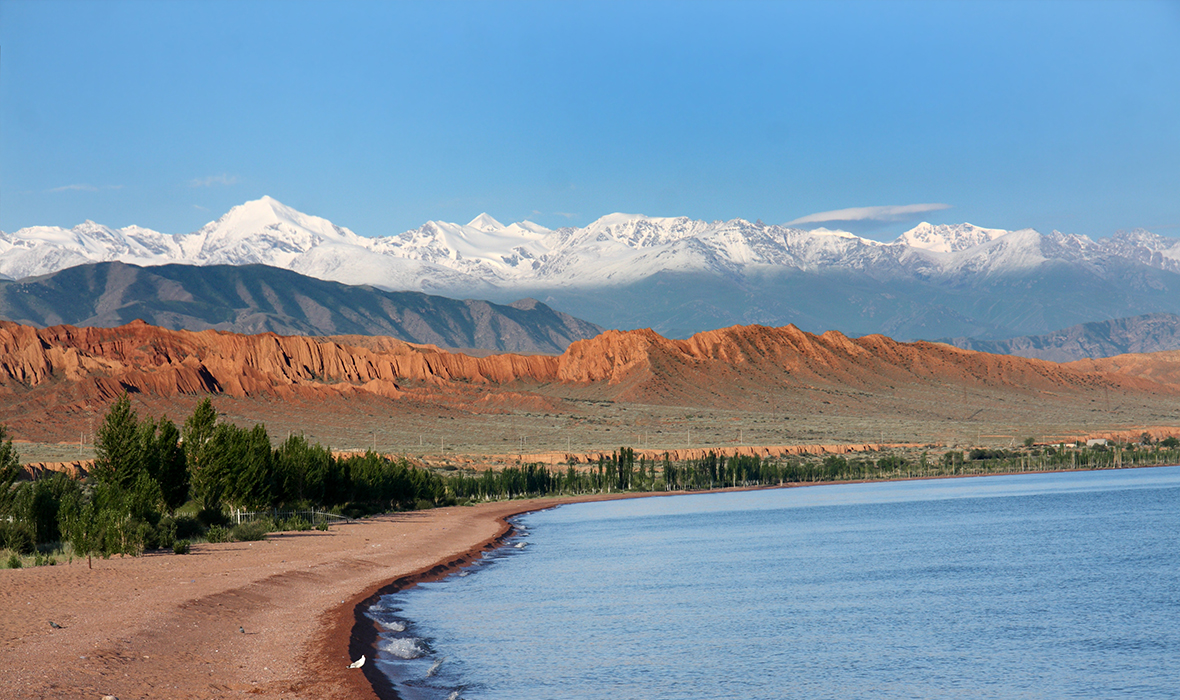Hidden in the yawning expanse of Central Asia that makes up the Stans are some treasures that should be on every intrepid traveler’s map. These seemingly uncharted lands are full of truly mind-blowing ancient and natural wonders. From the historic basin of the Aral Sea, to the fiery mouth of the Door to Hell, and ancient lakes and mountains thrown in for good measure, we’re sure that you’ve never seen anything like these fascinating locales before…
ABOVE: Aral Sea, once one of the grandest lakes in the world.
Once one of the grandest lakes in the world, fed by two of Central Asia’s mightiest rivers, much of the Aral Sea has now evaporated. In 2007, the lake had split into four basins – north, east and west basins of the once far larger south Aral Sea, and a smaller lake sandwiched in between. Just this year, it was announced that the southeastern basin had dried up for the first time in over 600 years. The Kazakhstan government is undertaking the heavy burden of reviving the lake, and its environmentally-sustainable efforts do seem to be working. The north Aral Sea has seen water levels replenished by nearly 40 feet, with many species of fish flourishing once again.
A visit to the Aral Sea is a step back in time. Formed over five million years ago, the Aral Sea has had a huge impact on the region’s culture, climate and history. Spend a memorable night camping in the dry bed of the southeast basin in a traditional, comfortable yurt tent. Looking up at the star-blanketed sky, you’ll get a window into a past few have the chance to experience in their lifetime.
ABOVE: Its verdant, fertile plains are framed by the majestic Tien-Shan mountains to the north, the Gissar-Allai range to the south.
Stretching across three former Soviet states, the Fergana Valley is incredibly diverse both ethnically and environmentally. Its verdant, fertile plains are framed by the majestic Tien-Shan mountains to the north, the Gissar-Allai range to the south, with the Naryn and Kara Darya rivers providing irrigation from east to west. Despite its natural beauty, the Fergana Valley has also been home to bloody battles, having been in the hands at various times throughout history of the Achaemenid Empire, the Han Dynasty, the Bactrian Empire and the Samanids.
Visitors to the valley can look forward to colorful, historic mosques, opulent palaces, handcrafted silks and ceramics, and of course plenty of hiking across its vast, seemingly unending land, with jaw-dropping views and picture-perfect picnic spots.
ABOVE: Darvaza was lit by Soviet petroleum engineers over four decades ago, and still burns with a fiery passion today.
In terms of the Stans, Turkmenistan is one of the lesser-known of the bunch, yet undeservedly-so. It boasts not just one, but two of our picks for the wonders of the Stans: the ominous-sounding Door to Hell and the exquisite Yangikala Canyons that rival the Grand Canyon in the US.
Visitors are likely to find the Door to Hell aptly-named: this gaping natural gas field in Darvaza was lit by Soviet petroleum engineers over four decades ago, and still burns with a fiery passion today. The engineers lit the crater they’d dug looking for massive oil reserves in an attempt to burn off the excess gases. Whoops. Shame for the engineers, but a lucky mistake for visitors, who can gaze at the hypnotic sulfur flames – from a safe distance.

ABOVE: Carved into the Turkmenistan landscape, this canyon was shaped by none other than the Caspian Sea some million-odd years ago.
Speaking of flames, the Yangikala Canyons burn fiery hues – or so it may appear, with bands of yellow, orange, and red painting the steep canyon walls. Carved into the Turkmenistan landscape, this canyon was shaped by none other than the Caspian Sea some million-odd years ago. Now completely dry, visitors can camp in the depths of the valley or on the top of the canyon’s plateau and experience an unforgettable night in one of the planet’s most isolated, exotic locations.
ABOVE: It is the most unique, authentic, and attractive part of the country.
Visitors to Kyrgyzstan simply cannot miss Karakol: it is the most unique, authentic, and attractive part of the country. The cuisine is tastier, the people friendlier, and the sights truly inspirational. Here, we have yet another of the Stans being home to two of our choices for wonders of the Stans: Issyk Kul Lake and Jet-Oghuz (or Seven Bulls).
A sun-seeker destination in the Stans, Issyk Kul Lake is kitschy but fun and a great place to people-watch. Not only that, but at 25 million years old, it’s one of the world’s few remaining ancient lakes, while also being the second-largest alpine lake on the planet. If that weren’t enough, the towering Tien-Shan mountains provide a beautiful backdrop, and exotic species of birds and fish call the area home.
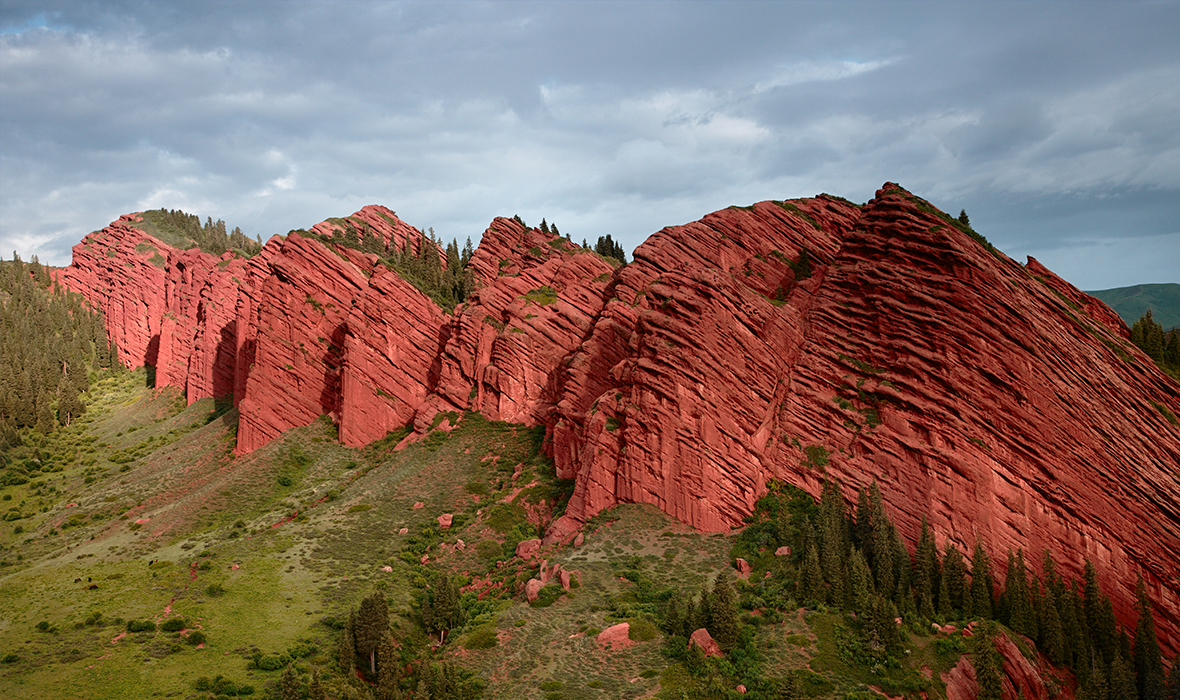
ABOVE: Jet-Oghuz, or the Seven Bulls
Just 16 miles south of Karakol is Jet-Oghuz, or the Seven Bulls – the name of a red sandstone rock formation that comes with its own fascinating legend. The name comes from the appearance of the 20-plus mile rock wall, which resembles giant bulls standing side-by-side. At the foot of the cliffs are verdant landscapes overgrown with grass and pinetrees. Hotsprings here are famous for their unique properties, rich as they are in radon and hydrogen sulfide.
TAJIKISTAN – PAMIR MOUNTAINS
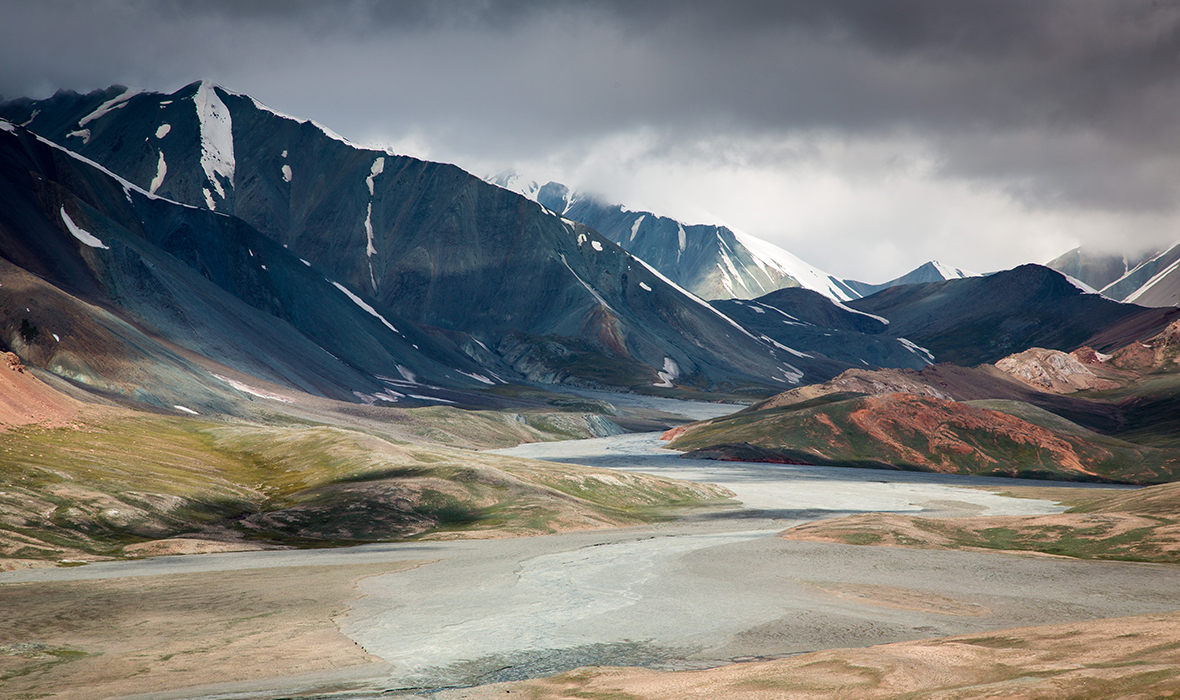
ABOVE: Pamir Mountains have long been known as the ‘Roof of the World’
Probably the least-known of all the Stans, Tajikistan’s remote Pamir Mountains hold up the tail end of our wonders of the Stans list. Nearing the top of the list of world’s highest mountain ranges, the Pamir Mountains have long been known as the ‘Roof of the World’. In ancient times, they connected Xian to Kashgar on one of the routes along the Silk Road.
Just recently introduced to the tourism world by a New York Times feature in 2009, the popularity of the area is growing, but still has a long way to go. Intertwined amidst the exquisite landscape shots lie age-old petroglyphs, representing some of the first traces of civilization. Nowadays, local Pamiris are warm and welcoming, with a unique tradition and culture all their own.
So, there you have it: the seven wonders of the Stans, perfect for adventurers who love to get as far off the beaten path as possible, and see some of the world’s least-known, most memorable sights.

